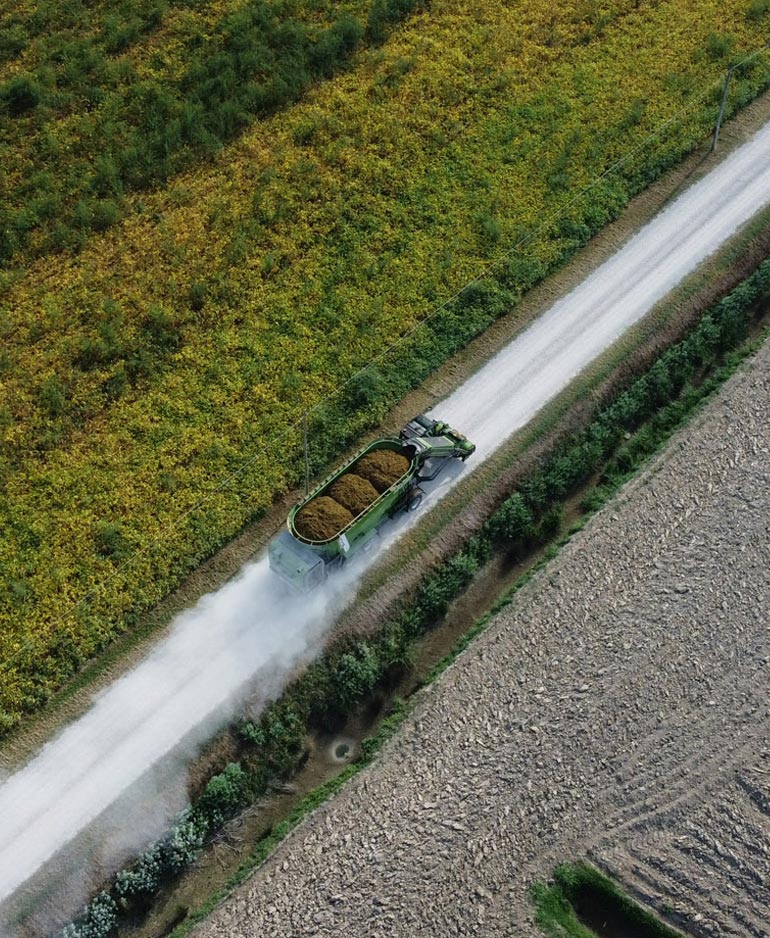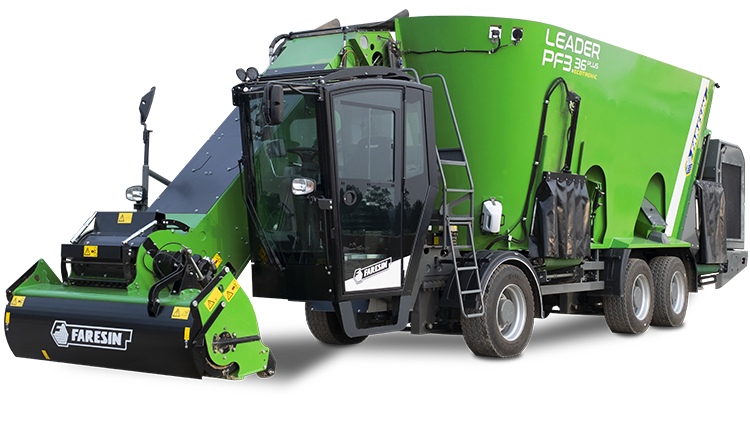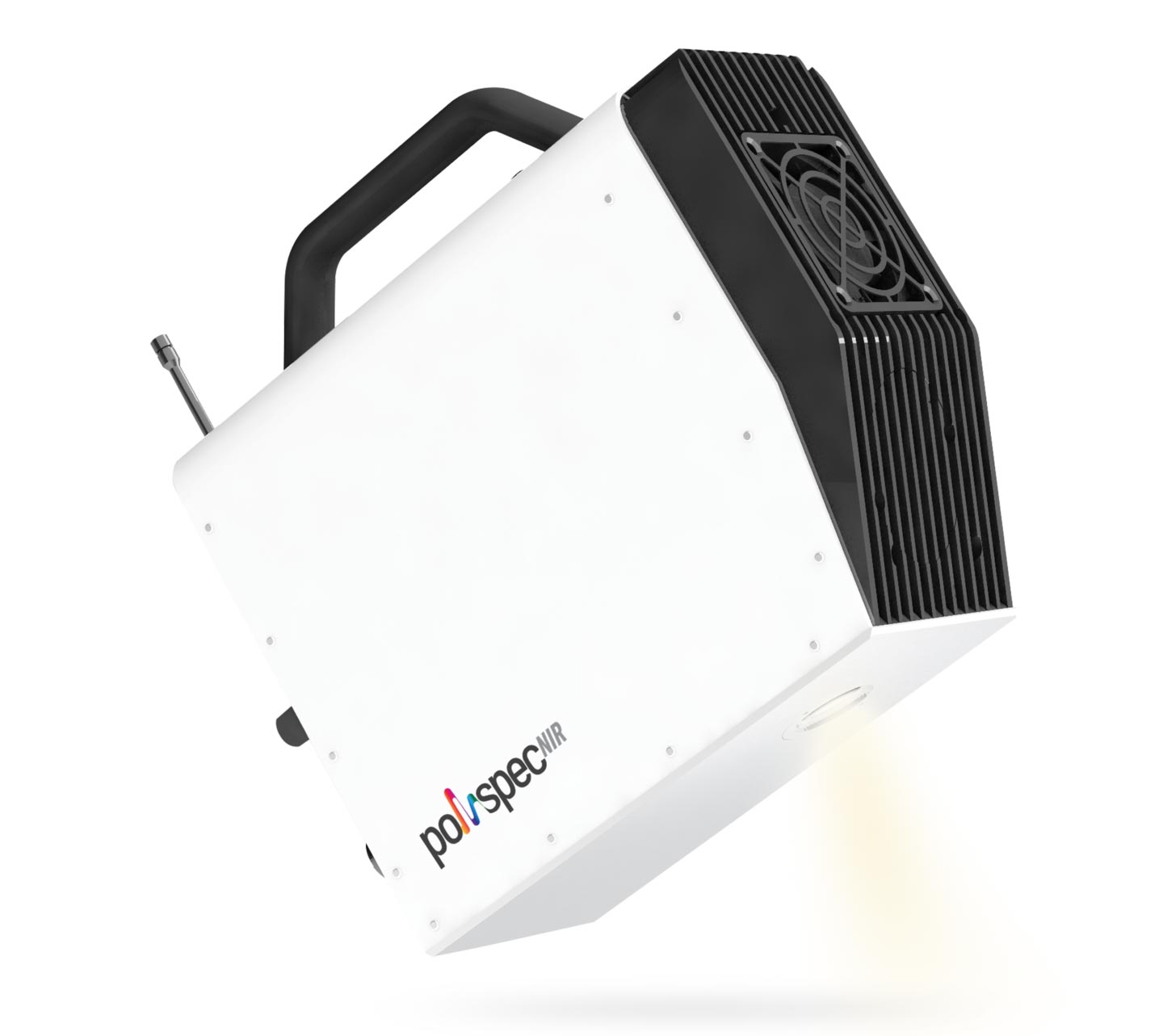ECOTRONIC
Automates all machine devices
The flagship of the new Leader PF3 mixer wagon is the innovative Ecotronic system. An interconnected system that automates all machine devices to optimize productivity, service costs and animal welfare at the same time.
Once the feeder’s recipe is entered either from the weighbridge display or from the FARM MANAGER WEB management program, the operator can manage the entire ration preparation process, programming all the machine’s organs according to the raw materials that are gradually, gradually loaded. For each component of the mixture (hay, silage, or meal), it can set tiller, shredder, and augers in order to produce the best quality unifeed.


Automatic activation and management of auger speed
Automatic adjustment of diesel engine rpm
Automatic adjustment of the counter-knife position
Automatic unloading door and belt adjustment
Automatic speed of the milling cutter
Automatic shredder activation and cut length management
Automatic adjustment of the loading belt speed
Ecotronic
What does it manage?
With the Ecotronic system, the operator’s work is significantly simplified, making him or her a “system conductor” without the need for special professional skills.
For example, if alfalfa is loaded, the operator can decide of the tiller speed he prefers, he can activate the straw shredder and select the length of fiber obtained from the cut, and he can adjust the speed of the augers, also deciding whether or not to engage the counter knives.
Once the parameters for each ingredient are chosen, the Mixer Wagons automates the cutting, loading and mixing steps, turning the operations into a true Industrial process and thus saving the operator valuable time.


MONITORS BLENDING IN REAL TIME
Fundamental is the synergy with Polispec NIR, which, through integration with the mixer wagon, enables real-time monitoring of the mixture and automatic changes in the shredder setting with reference to the characteristics of the unifeed fiber inside the mixing tub. The system will then indicate to the operator the ideal time to discharge, based on the level of homogeneity achieved.